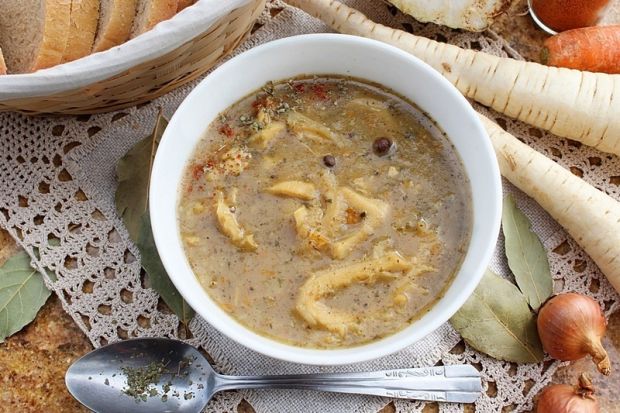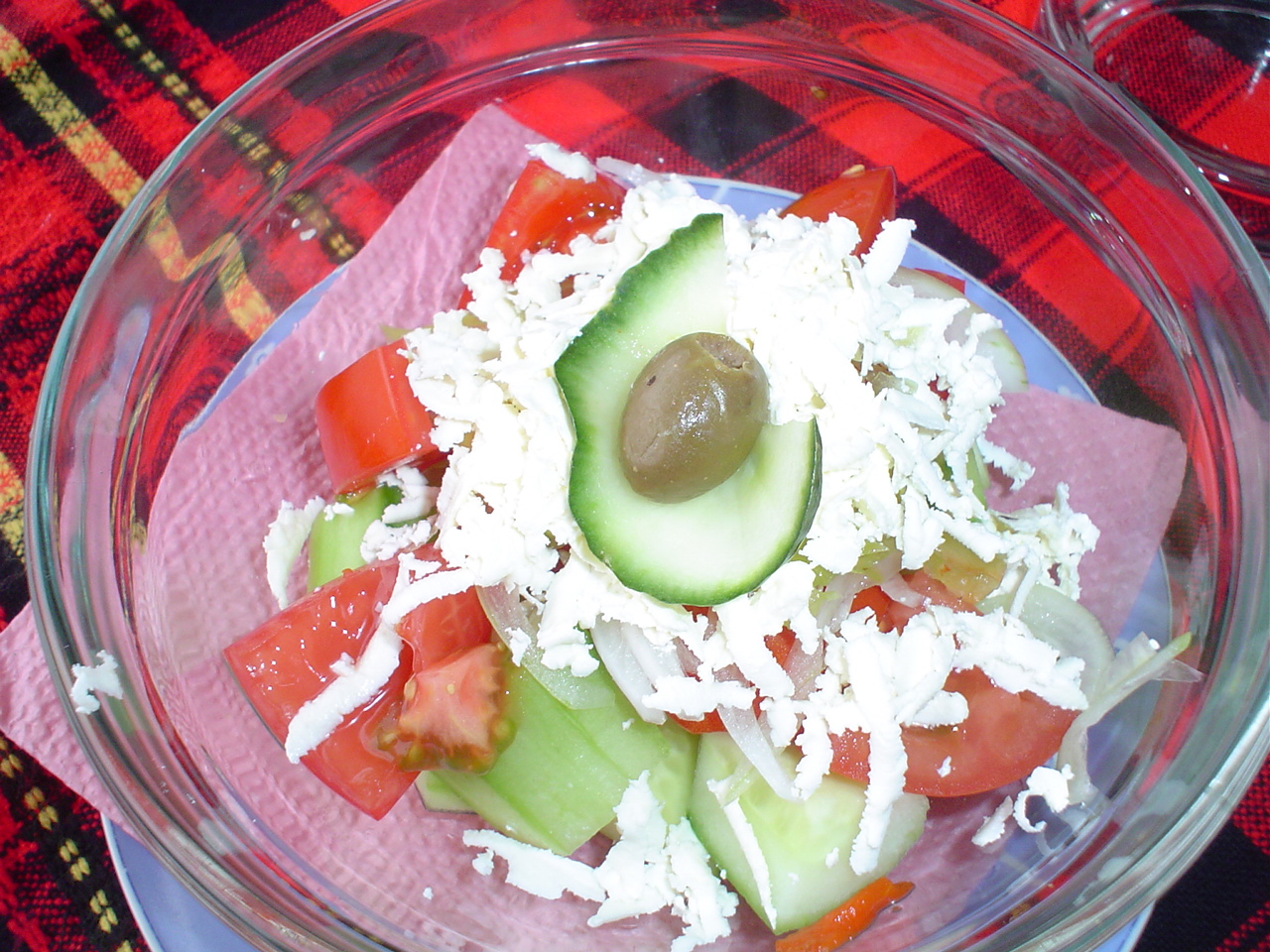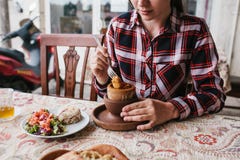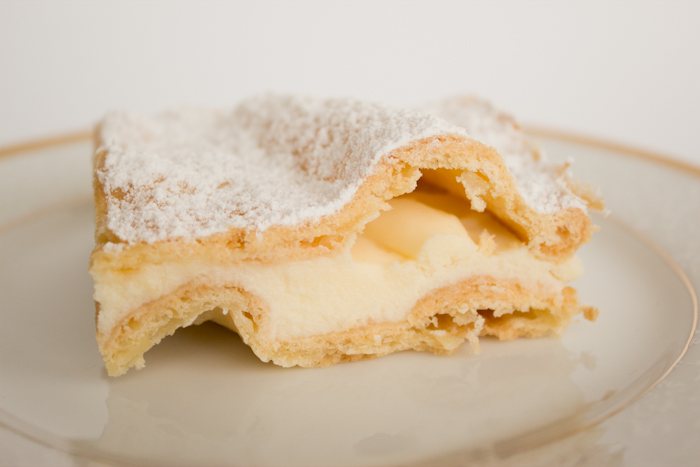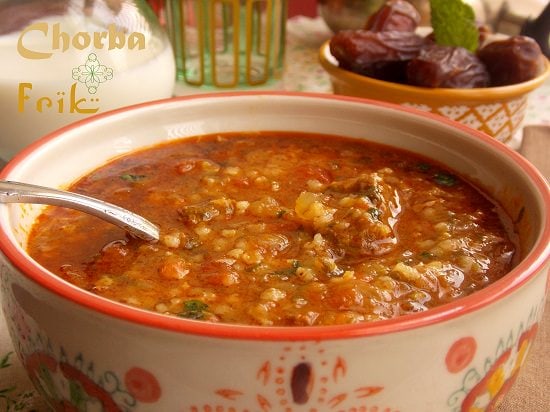 Do podstawowych potraw kuchni bułgarskiej należą również wszelkiego rodzaju „czorby”, „gjuwecze” i „musaki”. Czorby są to pikantne zupy, które mogą być podawane na ciepło i na zimno, a wywodzą się w prostej linii z kuchni starobułgarskiej. Obok pojęcia ,,czorba” używa się również w Bułgarii określenia „łupa”; między jedną a drugą istnieją jednak zasadnicze różnice. O ile pierwszą z nich gotuje się tak jak przed wiekami na „małym ogniu” łącząc od razu wszystkie produkty, o tyle drugą — będącą już nowszym wynalazkiem — przygotowuje się w wysokiej temperaturze, a składniki dodaje stopniowo. „Wkładkę” do czorby stanowić mogą jedynie kawałki mięsa, flaczków, jarzyny i ryż, natomiast do zupy dodaje się często kluski lub makaron.
Do podstawowych potraw kuchni bułgarskiej należą również wszelkiego rodzaju „czorby”, „gjuwecze” i „musaki”. Czorby są to pikantne zupy, które mogą być podawane na ciepło i na zimno, a wywodzą się w prostej linii z kuchni starobułgarskiej. Obok pojęcia ,,czorba” używa się również w Bułgarii określenia „łupa”; między jedną a drugą istnieją jednak zasadnicze różnice. O ile pierwszą z nich gotuje się tak jak przed wiekami na „małym ogniu” łącząc od razu wszystkie produkty, o tyle drugą — będącą już nowszym wynalazkiem — przygotowuje się w wysokiej temperaturze, a składniki dodaje stopniowo. „Wkładkę” do czorby stanowić mogą jedynie kawałki mięsa, flaczków, jarzyny i ryż, natomiast do zupy dodaje się często kluski lub makaron.
Szczególne znaczenie — ze względu na wysokie walory odżywcze — miały przez stulecia w Bułgarii „szkembe-czorba” i „kurban-czorba”, której przyrządzanie wiązało się z dawnymi obrzędami religijnymi. W „kurban-czorbie” drobno pokrajane warzywa i mięso gotuje się razem. Na tłuszczu dusi się cebulę i pomidory, a następnie dodaje mąkę. Zasmażkę rozprowadza się wywarem z warzyw i mięsa łącząc je razem. Gdy mięso jest prawie miękkie, wrzuca się pokrajaną w kostkę, sparzoną przedtem wątrobę, ryż, świeże pomidory i ostre papryczki. Do gotowej zupy dodaje się roztrzepane z octem jajka oraz drobno posiekaną nać pietruszki i miętę.
Od charakterystycznego kształtu naczyń, w jakich są zapiekane, wzięły swoją nazwę ,,gjuwecze”. Dania te sporządza się z tłustych, młodych mięs — wieprzowiny, baraniny — nie dodając już do nich na ogół tłuszczu. Zazwyczaj przygotowując gjuwecz na wstępie lekko dusi się mięso z drobno posiekaną cebulą i pomidorami. Pozostałe produkty dodaje się w stanie surowym tuż przed wsunięciem potrawy do piekarnika. W skład gjuwecza wchodzą również — obok mięsa i jarzyn — ryż lub ziemniaki. W Bułgarii sporządza się też gjuwecze bezmięsne — np. z ryżu i grzybów, cebuli i papryki (gjuwecz po owczarsku) albo zielonej fasolki, pomidorów i cebuli (gjuwecz po karakaczańsku). Są to dania lekkie i bardzo smaczne, podawane na ciepło lub na zimno.
Innego rodzaju zapiekankami są wspomniane już musaki. Bezmięsną musakę robi się z ziemniaków, kabaczków, zielonej fasolki itp. Warzywa najlepiej dusi się w niewielkiej ilości wody, a następnie — pokrajane w plastry — układa w brytfannie. Między warstwy warzyw kładzie się ugotowany ryż. Tak przyrządzoną musakę zalewa się wywarem z warzyw i tłuszczem, a potem piecze w piekarniku. Przed końcem pieczenia zalewa się całość roztrzepanymi z mlekiem jajkami i wsławia do gorącego pieca, aby powstała chrupiąca, lekko zrumieniona skórka. Musaki mięsne przygotowuje się z mięsa mielonego, ziemniaków, kabaczków itp.

